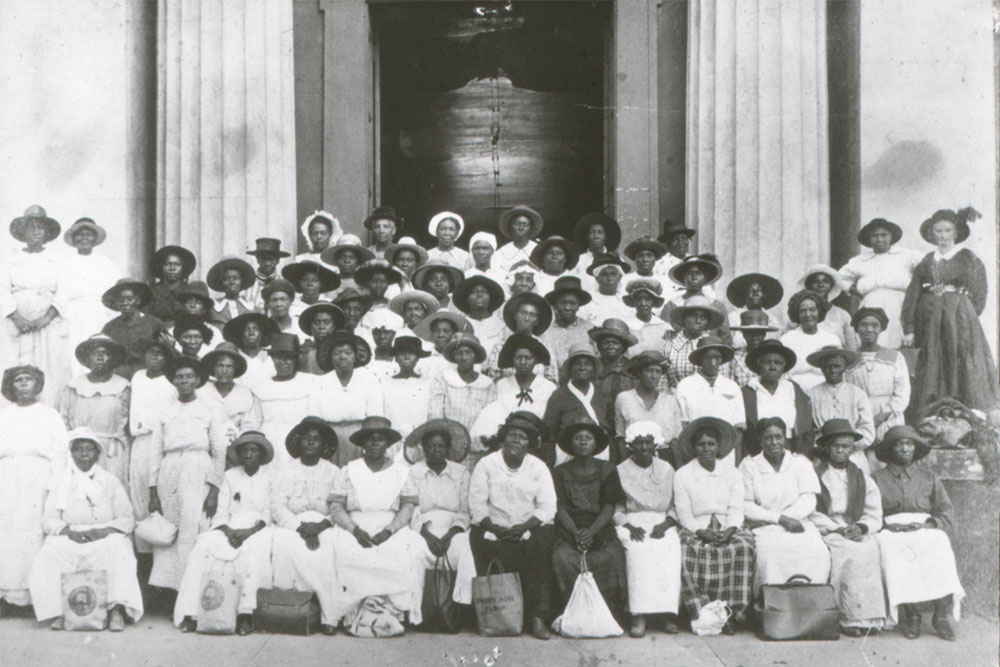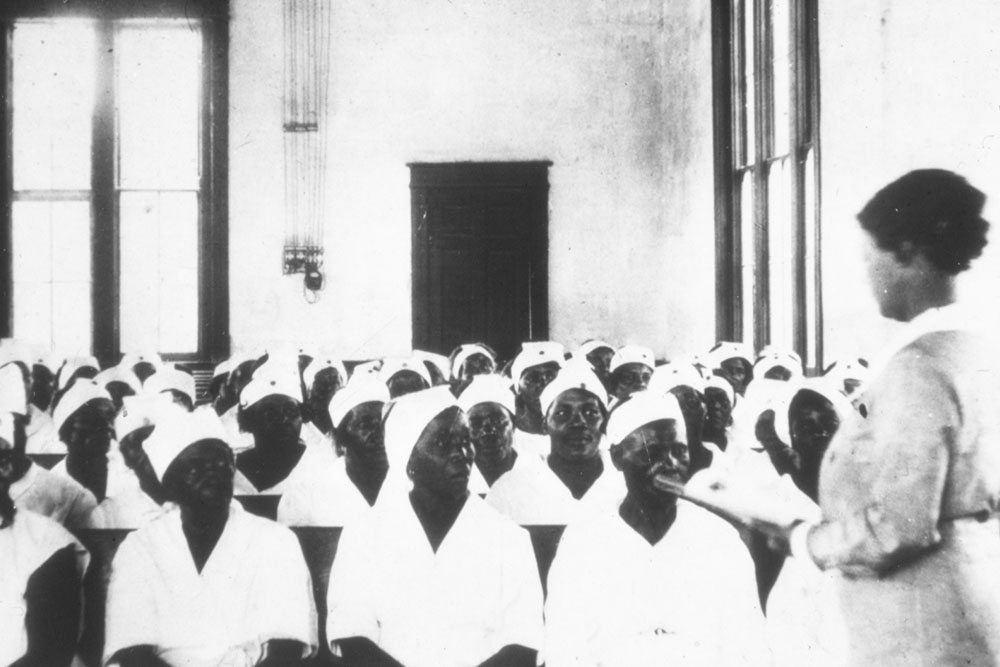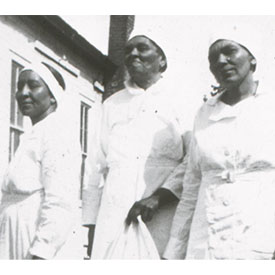Black Midwifery's Complex History

In the U.S., Black women who give birth die at a rate that is three to four times higher than for white women. The mortality rate for Black infants is also starkly worse—more that twice that of white children. Such racial disparities have a long history rooted in systematic racism and the white supremacy that underpins it. Yet Black midwives have always been a vital piece in the care puzzle for Black birthing people, notes the Black Mamas Matter Alliance, and the historical and ongoing work of Black traditional and community-based midwives to help establish equitable systems of care must be recognized and uplifted.
As part of Black History Month, this week’s featured articles showcase the essential role of Black midwives throughout American history, even as other health-care providers sought to degrade the birth work of traditional midwives and eliminate their practice altogether.
Until the late 19th century, the majority of births were attended by midwives, many of whom were Black, indigenous, or immigrant women. Most midwives, including enslaved women, drew upon traditional healing knowledge and practices passed down through generations. Others learned their practice through apprenticeship, either to local physicians or experienced midwives in their community.
In the early 20th century, however, as childbirth became medicalized, physicians emerged as the primary birth attendants and childbirth moved from the home to the hospital. Midwives delivered about half of all babies in the U.S. in the early 1900s; by 1930, however, that figure had dropped to fifteen percent.
Even as government-funded research in the 1930s continued to document the better birth outcomes achieved by midwives compared to physicians, reformers continued to blame Black, indigenous, and immigrant midwives for the country’s abysmal mortality rates.
Dominique Tobbell
These early decades of the 20th century also witnessed high rates of maternal and infant mortality. Obstetricians and public health and social welfare reformers blamed the midwives, despite evidence from several research studies that midwife-attended births accounted for fewer maternal deaths than those attended by general practitioners, who were typically poorly trained in obstetrical techniques. Public health nurses joined obstetricians in a campaign to eliminate traditional midwives, calling Black, indigenous, and immigrant midwives incompetent, unsanitary, and dangerous. At the same time, though, some public health nurses recognized that professional midwives in Britain and Europe contributed to low maternal and infant mortality rates in those countries. They worked to establish nurse-midwifery as a new specialty in which nurses (the overwhelmingly majority of whom were white women) would be trained in both nursing and the practice of midwifery. The first nurse-midwifery training programs launched in the mid-1920s and early 1930s, and their growth continued over the ensuing decades.


As part of the broader effort to reduce infant and maternal mortality rates, Congress passed the Sheppard-Towner Act of 1921. This regulatory initiative provided federal funding to states to establish midwifery training and licensure and targeted Black midwives in the South, who represented the largest group of unregulated birth attendants. Health departments established midwifery classes taught by public health nurses—many of whom had far less experience attending births than the midwives they were training. To be licensed, midwives had to undergo this training and submit to supervision by public health nurses.
Even as government-funded research in the 1930s continued to document the better birth outcomes achieved by midwives compared to physicians, reformers continued to blame Black, indigenous, and immigrant midwives for the country’s abysmal mortality rates. Throughout the segregated South, however, Black midwives continued to provide essential care to Black families, especially in rural communities lacking access to physicians or public health nurses. Ultimately, though, the increased regulation of traditional midwives by state health departments and the growing role of nurse-midwives in the mid-20th century contributed to the demise of traditional Black, indigenous, and immigrant midwives.
This complex history is explored in this week’s featured articles:
- “Constructing the Modern American Midwife: White Supremacy and White Feminism Collide” documents the influence of white supremacy on American midwifery and explains why—in 2021—“American midwifery [is] so white.”
- ‘Something Wasn’t Clean’: Black Midwifery, Birth, and Postwar Medical Education describes the history and impact of the 1953 health film, All My Babies: A Midwife’s Own Story, which was intended as a training tool for midwives but subsequently used widely in medical education.
- The 1951 photo essay Nurse Midwife appeared in Life magazine and profiles the work of Maude Callen, a Black nurse-midwife who provided critical health care within a poor and underserved community in rural South Carolina.
- “Flashback Friday - All Hail the Midwife” draws on the Caroline H. Benoist Collection in the Bjoring Center for Nursing Historical Inquiry and offers a glimpse into public health nursing in Mississippi in the 1930s.
